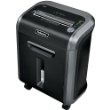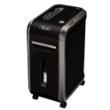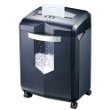Yes, You Really Need to Own a Paper Shredder
Let’s get down to brass tacks: yes, you probably work in an office that has its own paper shredder. Despite that, you really do need to have one of your own as well. It may seem like such a little, insignificant thing, but the truth is that just like all other notable inventions, paper shredders were created to help solve a problem and make our lives easier. In the current day and age that we all live in, the last thing we need to do is have to worry if our paper waste is circulating out there, clogging up landfills or being used to commit identity theft.
Here are our top 10 picks for the Best Paper Shredder
Features to Consider When Choosing a Paper Shredder
When it comes to choosing the best paper shredder, there are some things to keep in mind. Before going out and buying one, make sure that you already know your purposes for buying a paper shredder. Will you be using it at home or for work? How many pieces of documents or materials will you be shredding in a day and how often? How much security do you need? Personal uses may differ from person to person so this is important to answer first. Once you already have an idea how your paper shredder will be used, other considerations will be easy to follow.
Consider what you will be shredding – Your shredder is working at its utmost performance when it’s able to function smoothly for the purposes you bought it for. Obviously, shredders can handle the job of disposing of documents and papers. But do you also intend to dispose of other materials like old credit cards, CDs, DVDs, multi-page documents in paper clips or staples and other tougher materials? Then you may need to consider a heavy-duty paper shredder. Look for shredders with a wide feed slot if you think you’ll be shredding large items like folders and envelopes. Look for shredders with credit card or disc slots if you think you’ll be shredding these tougher plastic items.
Consider the shredder’s feed capacity – How much volume will you be feeding the shredder from time to time? Normally, light demand for shredding materials like the case for home use or for a small office may take a feed capacity of 6 to 24 sheets at a time. Be careful, though, as some brands may be exaggerating the ability of their shredders. So make sure that you consider the right feed capacity to your shredder. Consider the bin capacity as well, as a large volume of shredded paper can easily fill up the bin; look for a bin capacity of 5 gallons or more if you think you’ll be shredding lots of paper.
Consider your shredder’s limit – Some people prefer to allot a certain time to do their paper-shredding rather than doing it immediately. This results in a pile of papers to be shredded in one big batch once or twice a day. If you think you’ll be one of these people, you’ll have to consider your shredder’s limit. The limit refers to the length of continuous time the shredder can work before it needs to be given a break. Most shredders can work on 100 batches of material across 5 minutes of continuous shredding. The size of the batches would vary depending on the shredder’s feeder capacity. Usually, shredders need a cool-down period of 20 to 30 minutes before they can get back to work. Some shredders may even take as long as 90 minutes. This is important because you have to consider whether you’re willing to spend 20 or so minutes of your time each day waiting on a shredder to cool down.
Consider the shredder’s performance – Gauge a shredder’s performance in terms of jam-free operation, wear and tear, and DIN level. Nothing is as annoying and time-consuming as frequent jamming. If your shredder is supposed to be heavy-duty and promises to work on tough materials like cards, CDs, and papers with staples or clips, it should be able to deliver on its promise without premature wear and tear on its blades. Also, shredders are gauged based on their security level by a measure of 2 to 6 DIN with 6 as the most secure.
Consider your shredder’s safety measures – This is important especially for home or personal use. When you have kids (or even pets) at home, you’ll need to consider safety measures when it comes to choosing the right shredders. Thankfully, most shredders nowadays come with safety measures such as slim paper intake slots, lock-out keys, switches hidden in the back to avoid accidental activation, and blade guards to keep fingers or paws from getting sliced.
Consider your shredder’s warranty – Make a wise investment in your shredder. Shredders normally come with a one-year warranty but there are some that come with extended warranties of two years or more. Other manufacturers also offer separate warranties for the blades or cutting mechanisms.
Paper Shredders Ensure Security
The word “security” brings up certain images in the mind’s eye, especially in the modern age. There’s a lot of bad stuff in that goes on in the world, and while no one is asking you to go enlist to make the world a safer place, there are things we can do each and every day to keep ourselves, our places of work, our homes, and our friends and family as reasonably safe as we can.
This is where having a paper shredder comes in. Having a paper shredder at home does more than ensure you can turn your junk mail into hamster shavings. Whenever you get a utilities bill in the mail, or an update to your insurance policy, or a bank or credit card statement, just tossing these items out in the trash for anyone to find isn’t exactly the safest course of action. However, with a paper shredder, you don’t have to worry about sensitive personal information like your Social Security number or your checking account number falling into the wrong hands. It’s just the same in professional situations, as paper shredders give company owners and customers the peace of mind knowing that their company is taking proper steps in maintaining utmost security. It paves the way for an unspoken bond of trust. When companies gain the people’s trust, this ensures loyal customers and drives sales forward. Laws have also been set to make sure that companies are compliant on handling and destroying personal information.
Paper Shredders are Eco-friendly
While we’re at it, it’s a great thing to know that paper-shredding has provided companies and businesses responsible means to recycle and be eco-friendly. This is a good alternative to just throwing a piece of paper into the trash where there’s a chance you may be breaching personal or corporate security and just generating waste. Almost everyone uses paper on a daily basis so just imagine the amount of trash waste paper contributes to the environment. Recycling paper is one way to keep landfills from quickly filling up. When we recycle waste paper, we are also protecting trees from being cut down for new paper consumption.
Protecting yourself and others from identity theft, stewarding the environment, complying with local regulations, making our customers happy, and just being all-around responsible – that’s a load of pretty serious stuff you get from shedding – and all for just the low cost of a good-quality paper shredder.
What Is A Paper Shredder?
A paper shredder is a mechanical device used by governments, companies, and individuals to shred papers and other items. Its main purpose is not just to destroy the papers but more importantly to secure confidential and sensitive information from falling into wrong hands. Originally it was utilized in wartimes of the past. Adolf Ehinger’s paper shredder in 1935 was believed to be for the purpose of shredding his anti-Nazi propaganda which was under threat of finding it’s way to German Nazi authorities. Before the US embassy in Iran was captured in 1979, the embassy was able to make use of their paper shredder in destroying critical data. In the 1988 Supreme Court rule over the California v. Greenwood case, materials that may be found even in garbage bins already awaiting their collection outside houses were found to be admissible as evidence in court for the first time. These and other scenarios that have made it to the news, where the role of paper shredders was put in high profile, set the stage for this mechanical device to enter into not just governments and businesses but even in private homes.
Types of Shredders
Since its invention, different types of shredders have been introduced. These shredders vary in size, price, and capacity. Sizes may vary from small enough to fit under your desk to the size of a large truck. Some shredders can be bought for only a few bucks while some cost hundreds of thousands of dollars. Some shredders are designed to take in only a few pages at a time while some are designed to shred millions of pages per hour.
Strip-cut Shredder – This type of shredder is probably the simplest of its kind. It has a rotating blade or knife used to shred papers into long strips or as long as the original sheet of paper. If you have watched enough movies, you may remember a scene where detectives or investigators tried to reassemble shredded pieces of paper they found in a waste basket. Putting the pieces back together may be possible if a strip-cut shredder was used. This means this type of shredder is also the least randomized. That makes the strip-cut shredder the least secure of the shredder types as well; people with ill intentions can, like those detectives and investigators, reassemble the shredded pieces if they have enough time and energy, which could pave the way for acts of fraud or identity theft. Another downside to strip-cut shredders is the fact that they create the highest volume of waste materials. In order to ensure utmost security, the shredded pieces have to be cut into really narrow strips – strips from strip-cut shredders range from 3/8 inch to 1/16 inch wide – and then randomized.
Cross-cut Shredder – This type of shredder uses two contra-rotating drums or specially designed blades. The shredded pieces are cut into small squares in rectangular, parallelogram, or diamond shapes. Unlike the strip-cut shredder, the shredded pieces from the cross-cut shredder are narrower. The shredded strips range from 3/8 inch to 1/32 inch wide and come in different lengths as well. This makes it much harder – if not impossible – to piece documents back together. They are also widely available at affordable prices. It’s no wonder cross-cut shredders are popular choices for small companies and individuals.
Micro-cut Shredder – This shredder is the most secure of its kind. Of course, it’s also the most expensive one as well! The security comes from the fact that the micro-cut shredder is able to cut papers into really small confetti-like strips. Imagine a single sheet of paper turning into more than 12,000 pieces! For this reason, this is the type of shredder is commonly used in research facilities and government agencies to ensure top-notch security.
Disintegrator – This type of shredder is used to shred CDs, DVDs, USB drives, tapes, flash drives, and other optical media. This is a heavy-duty shredding machine that has multiple blades used to cut papers or other materials at random until the pieces are small enough to pass through a mesh or a sizing screen.
Hammer Mill – This type of shredder is another heavy-duty shredding machine similar to a disintegrator. It uses rotating hammers to pound the paper or other material until the particles are small enough to pass through a mesh or sizing screen. A hammer mill may have knife blades, blunt edges, or both. The mesh or sizing screen can be adjusted depending on the user’s desired size. This enables the user to produce dust particles from the paper with the use of the right screen size.
Pierce-and-Tear Shredder – You’ll find this type of shredder in industrial and manufacturing operations. It is efficient in shredding cardboard, newspapers, and other specialty papers. Like the heavy-duty shredding machine that is the disintegrator, a pierce-and-tear shredder also uses multiple rotating blades. Just as its name indicates, this shredder pierces a hole in the paper or other material and then tears it into shreds. Some mobile shredding companies utilize truck-mounted pierce-and-tear shredders.
















